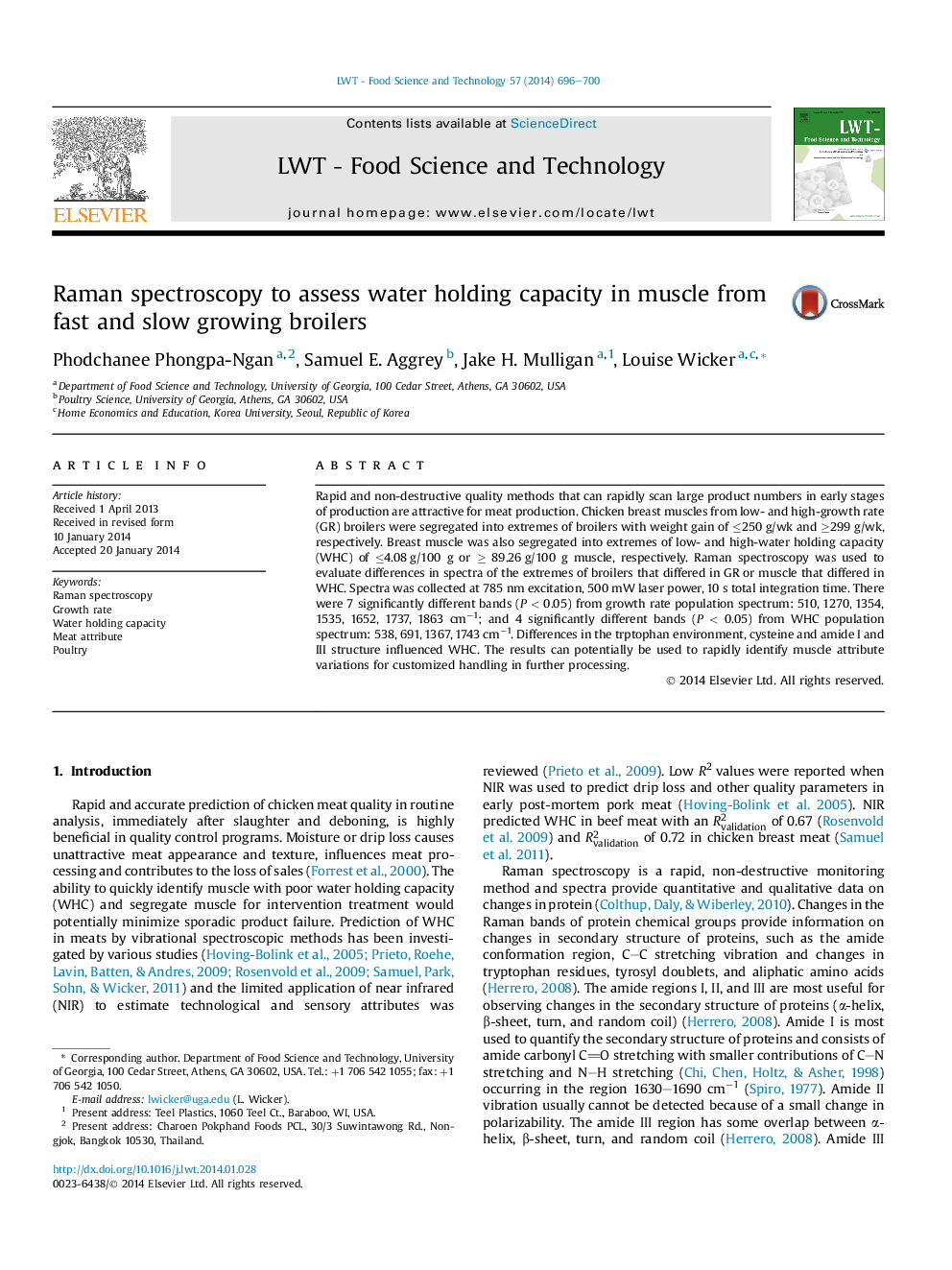| Article ID | Journal | Published Year | Pages | File Type |
|---|---|---|---|---|
| 6403435 | LWT - Food Science and Technology | 2014 | 5 Pages |
Abstract
Rapid and non-destructive quality methods that can rapidly scan large product numbers in early stages of production are attractive for meat production. Chicken breast muscles from low- and high-growth rate (GR) broilers were segregated into extremes of broilers with weight gain of â¤250 g/wk and â¥299 g/wk, respectively. Breast muscle was also segregated into extremes of low- and high-water holding capacity (WHC) of â¤4.08 g/100 g or â¥Â 89.26 g/100 g muscle, respectively. Raman spectroscopy was used to evaluate differences in spectra of the extremes of broilers that differed in GR or muscle that differed in WHC. Spectra was collected at 785 nm excitation, 500 mW laser power, 10 s total integration time. There were 7 significantly different bands (P < 0.05) from growth rate population spectrum: 510, 1270, 1354, 1535, 1652, 1737, 1863 cmâ1; and 4 significantly different bands (P < 0.05) from WHC population spectrum: 538, 691, 1367, 1743 cmâ1. Differences in the trptophan environment, cysteine and amide I and III structure influenced WHC. The results can potentially be used to rapidly identify muscle attribute variations for customized handling in further processing.
Related Topics
Life Sciences
Agricultural and Biological Sciences
Food Science
Authors
Phodchanee Phongpa-Ngan, Samuel E. Aggrey, Jake H. Mulligan, Louise Wicker,
